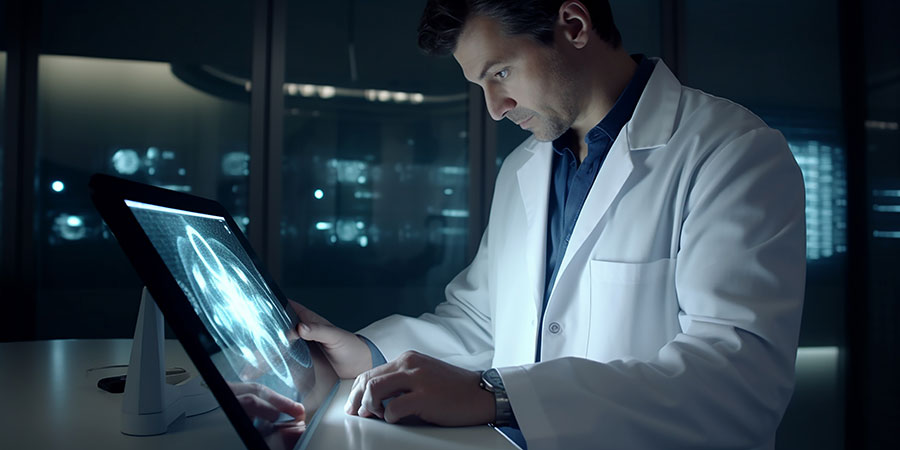FDA Software Classification Guidance
22-Oct-2024
Medical device software plays a critical role in modern healthcare, providing functions that range from managing patient data to directly controlling medical devices. The U.S. Food and Drug Administration (FDA) regulates such software, ensuring it meets safety and efficacy standards before it reaches the market. To help manufacturers navigate the regulatory landscape, the FDA provides guidance on software classification, which determines the applicable compliance requirements.
Understanding FDA Software Classification
The FDA classifies medical device software into three categories based on its intended use, the risk it poses to patients, and the level of control it has over the medical device. This classification system is critical in determining the amount of regulatory scrutiny a product will face during the FDA review process.
1. Software as a Medical Device (SaMD)
SaMD refers to software that functions as a medical device on its own. It is not tied to any specific hardware but can perform medical functions such as diagnosing, treating, or preventing diseases. Examples include apps that monitor heart rhythms or assist in managing diabetes.
Compliance requirements for SaMD are particularly stringent due to the direct impact the software may have on patient health. SaMD developers must follow FDA guidelines and standards, including risk management, validation processes, and cybersecurity measures.
2. Software in a Medical Device (SiMD)
SiMD is software that is embedded within or used as part of a medical device. This software is essential to the function of a hardware device, such as the control system in a pacemaker or the monitoring algorithms in diagnostic imaging equipment.
The FDA evaluates both the device and the software together, considering the safety and effectiveness of the combined system. Manufacturers must ensure the software complies with specific regulatory frameworks and integrates with the medical device hardware safely and effectively.
3. Non-Device Software Functions
Certain types of software, while related to medical care, are not considered medical devices by the FDA. This includes software that performs administrative tasks, like scheduling or billing and does not make medical decisions or control devices. Although this category is exempt from stringent FDA oversight, developers must still ensure compliance with relevant standards, such as data privacy regulations like HIPAA.
FDA Compliance for Medical Device Software
Manufacturers of medical device software must comply with a host of FDA regulations. Key elements include:
- FDA 21 CFR Part 820 (Quality System Regulation): This regulation mandates manufacturers to establish and maintain quality systems for the design and production of medical devices, including software. It covers processes such as design controls, risk management, and software validation.
- FDA 21 CFR Part 11: This regulation sets the requirements for electronic records and signatures used in medical device software development. It ensures the integrity of data, which is critical for SaMD and SiMD products.
- Risk Management: Developers must perform risk assessments and develop strategies to mitigate any potential software malfunctions that could harm patients. This includes identifying cybersecurity risks, such as hacking vulnerabilities that could compromise device functionality.
- Post-Market Surveillance: Even after a software product is approved, manufacturers must monitor its performance in the real world and report any adverse events or issues to the FDA through the Medical Device Reporting (MDR) system.
FDA Guidance Documents for Software Classification
The FDA regularly publishes guidance documents that clarify how different types of software should be classified and what manufacturers must do to comply with regulatory requirements. Key guidance documents include:
- “Software as a Medical Device (SaMD): Clinical Evaluation” - This document provides a framework for evaluating the clinical safety, performance, and effectiveness of SaMD.
- “Guidance for the Content of Premarket Submissions for Software Contained in Medical Devices” - This outlines what information should be included in premarket submissions, such as software descriptions, risk management plans, and verification and validation data.
Importance of Compliance
Complying with FDA classification and regulatory requirements is essential for medical device software manufacturers. Non-compliance can lead to delays in product approval, fines, or even market removal of the software. Understanding FDA guidelines and incorporating compliance strategies from the beginning of the development process is key to ensuring a smooth regulatory pathway.
Recent Posts

Impact of 2024 HCPCS Updates on Healthcare Providers
16-Aug-2024
The 2024 Guide to Employee Motivation
21-Aug-2024
7 Ways to Improve Performance Management at Your Company
23-Aug-2024
Choosing the Best HR Tool for Education: 5 Things You Need to Know
28-Aug-2024
Payroll Records: A Guide to Retention and Disposal
04-Sep-2024
AI Limitations Why Certain Jobs Will Always Require a Human Touch
09-Sep-2024
How the New HIPAA Rules Impact Reproductive Health Care Providers
13-Sep-2024
Best Strategies to Manage Toxic Employees and Boost Team Morale
20-Sep-2024
Top 7 Common Coding Errors That Trigger Audits and How to Prevent Them
26-Sep-2024
How OSHA is Involved in Mandating Protections for Employees
14-Oct-2024
FDA Software Classification Guidance
22-Oct-2024
Stay Ahead of FDA Inspections: Best Practices for Managing Form 483 Citations and Warning Letters
24-Oct-2024
Best Practices to Reduce Validation Effort and Costs
06-Nov-2024
Best Practices for Medical Device Software Validation and Risk Management
14-Nov-2024
Training Strategies to Comply with EEOC New Harassment Standards
14-Nov-2024
Guideline On Computerized Systems and Electronic Data in Clinical Trials
17-Dec-2024
What is Human Factor Engineering in Medical Terms?
17-Dec-2024
What is the Objective of Supervisor Training?
24-Dec-2024



